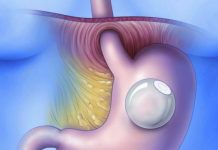When your doctor suspects any abnormal conditions such as cancer in your airways (lung cancer), he’ll recommend you to have a bronchoscopy.
A bronchoscope is a thin viewing instrument used to examine your inside airways for abnormalities.
Two types of bronchoscopes can be used to perform this test: flexible and rigid bronchoscope.
A flexible bronchoscope is often preferred to a rigid one and uses a long, thin, lighted tube to look at your airway. It doesn’t require any general anaesthesia and it doesn’t cause any discomfort.
On the other hand, the rigid bronchoscope is usually used with general anesthesia and uses a straight hollow metal tube to view inside your airways. It is also used to remove large samples for biopsy.
Limited bronchoscopy risks
Most bronchoscopies leave very few after-effects. Your nose and throat may become a little sore for a day or so. You may also feel sleepy or tired for a few hours, and should watch out for chest or throat infections.
In addition, if you have biopsy along with this test, you may cough up a little blood the next day. Even though a rigid bronchoscope scratches or tears your airways, the risks involved are limited. Only 1 in 1000 bronchoscopies can experience serious complications.
Remember, the conditions under which your doctors use the bronchoscopy are very serious health complications. It is mainly used to detect life-threatening cardiac problems or for low oxygen levels in your lungs. It is therefore very important for you to have a bronchoscopy, particularly if your doctor insists.
Complications that results from fiber-optic bronchoscopy are very few and some of them mainly include either heart and blood vessel problems or excessive bleeding after biopsy. Lung biopsy very rarely (almost 1%) causes leakage of air known as pneumothorax.
Follow the instructions given by your doctor to prepare for bronchoscopy. Certain instructions may include:
- Don’t eat or drink several hours before bronchoscopy.
- You’ll need somebody to take you home because the sedatives will make you feel drowsy.
- Inform your doctor if you are using any medications for other health problems.
Get more information about other complications involved in bronchoscopy from your doctor and take the necessary precautions to avoid them.












